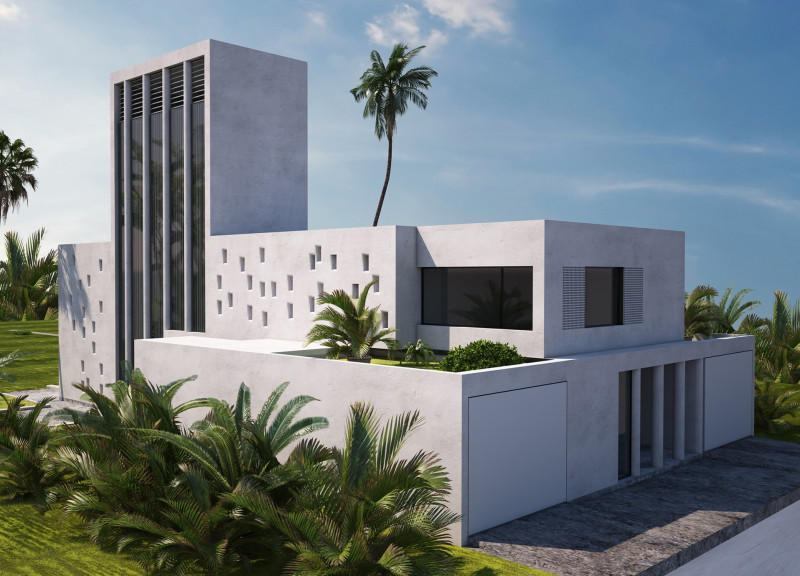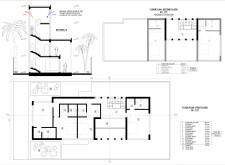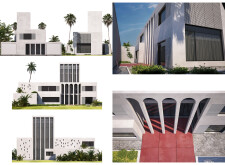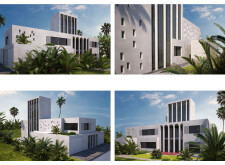5 key facts about this project
## Project Overview
The "House of the Future" was developed as part of an architecture competition focused on sustainability, with a primary goal of integrating environmentally sensitive solutions into modern residential design. Set in a climate conducive to natural ventilation, the design is tailored for warmer regions, highlighting its emphasis on passive cooling strategies. The project utilizes recycled aggregate concrete as its principal building material, reflecting a commitment to eco-conscious construction.
## Spatial Organization and User Experience
The interior layout is characterized by careful space planning that prioritizes functionality and comfort. The ground floor features an open lobby that allows ample natural light and fosters a sense of spaciousness. Essential living areas, including the living room, kitchen, and dining spaces, are designed as open-plan arrangements to encourage interaction and fluid movement. On the second floor, bedrooms are strategically located for privacy while ensuring easy access to shared bathrooms, facilitating convenience for residents. The stairwell serves as both a functional access point and a visual focal element, enhanced by natural light.
## Environmental Integration and Materiality
The use of recycled aggregate concrete in the facade not only reduces environmental impact but also contributes a distinct visual texture to the structure. Complementary materials such as glass and aluminum are incorporated to enhance the overall aesthetic and functionality of the design. Innovative design features, such as vertical slits and perforated panels, create a dynamic interplay of light and shadow while facilitating passive cooling through natural air flow. The inclusion of landscaped greenery, including palm trees, further enhances the integration of the building with its surroundings, promoting a connection between the occupants and the natural environment. The staircase tower is particularly notable, functioning as a natural ventilation system with controlled openings that support indoor air quality and reduce reliance on mechanical cooling systems.






















































